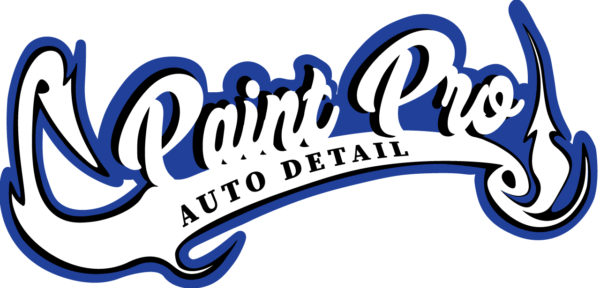
LEATHER PROTECTION
Car leather coating is a protective treatment designed to preserve and enhance the appearance of leather surfaces in your vehicle, such as seats, steering wheels, door panels, and other leather upholstery. Leather coatings are specifically formulated to protect against damage from spills, stains, UV rays, wear, and dirt. Here’s an overview of the benefits of car leather coating:
1. Protection Against Stains:
One of the most significant advantages of leather coating is its ability to repel stains. Leather coatings typically create a water-resistant barrier on the surface of the leather, making it more difficult for liquids like water, coffee, or food to soak into the material. This means spills can often be wiped away easily before they stain the leather.
2. UV Protection:
Leather, especially in cars that are frequently exposed to the sun, is highly susceptible to UV damage. Prolonged exposure to the sun can cause leather to fade, dry out, and crack. Leather coatings contain UV inhibitors that protect the material from the harmful effects of sunlight, helping maintain the leather’s color and texture over time.
3. Maintains Leather Softness and Flexibility:
Over time, leather can become dry and stiff, particularly in high-use areas like the seats and steering wheel. Leather coatings often contain ingredients that nourish and condition the leather, keeping it supple and soft. This helps prevent cracking, fading, and the degradation of the material’s texture, ensuring the leather stays comfortable and luxurious.
4. Easy Cleaning and Maintenance:
A key benefit of leather coating is that it makes cleaning and maintaining the leather interior significantly easier. The protective layer prevents dirt, dust, and oils from sticking to the surface, so you can clean the leather more easily with a simple wipe-down. This reduces the need for frequent deep cleaning or conditioning and keeps the leather looking fresh with minimal effort.
5. Enhanced Durability:
Leather coatings create a durable protective layer that helps shield the material from everyday wear and tear, including scratches, abrasions, and scuff marks. This is especially useful for high-contact areas such as the driver’s seat and armrests, where friction can cause leather to degrade faster. The coating adds an extra layer of durability that can significantly extend the lifespan of the leather.
6. Keeps Leather Looking Newer Longer:
Leather coatings help preserve the rich, glossy finish of the leather, preventing it from becoming dull and worn out. The coating acts as a barrier, protecting the leather from environmental elements that might otherwise cause discoloration or texture loss, ensuring your seats and upholstery retain their luxurious appearance for a longer time.
7. Protection Against Fading:
As mentioned earlier, UV rays from the sun can cause the leather to fade over time, especially in cars that are frequently parked outdoors. Leather coatings provide fade resistance, preserving the original color and appearance of the leather. This is particularly important for leather that is a lighter color, which is more susceptible to discoloration from UV exposure.
8. Water and Liquid Resistance:
The coating forms a hydrophobic barrier that prevents liquids from soaking into the leather. This is particularly beneficial for preventing damage from accidental spills, rain, or wet clothing. The leather remains dry and easy to clean, preventing water stains and mildew growth that can damage the material.
9. Enhanced Appearance and Gloss:
A leather coating can also enhance the visual appeal of the leather, giving it a deeper, richer shine. The added gloss makes the leather appear more polished, improving the overall aesthetic of your vehicle’s interior. This is especially true for luxury vehicles where maintaining the look of the leather is essential to its high-end appeal.
10. Reduced Cracking and Fading:
With regular exposure to heat, sun, and friction, leather can crack, fade, and deteriorate over time. A leather coating helps to reduce cracking and prevent the leather from becoming stiff, ensuring that the upholstery retains its smooth, pliable texture. This is especially beneficial for vehicles that are exposed to extreme weather conditions or used frequently.
11. Increased Resale Value:
If you’re planning to sell your car in the future, maintaining the leather interior in excellent condition can significantly increase its resale value. A well-protected and well-maintained leather interior looks more attractive to potential buyers and can make your car stand out among other listings, leading to a quicker sale and potentially higher offers.
How Does Leather Coating Work?
- Application Process: Leather coatings are typically applied as a liquid or spray onto clean, dry leather surfaces. After applying the product, it needs to be buffed in and allowed to dry completely. Some coatings may require multiple coats for optimal protection.
- Durability: The durability of a leather coating depends on the quality of the product and the level of wear and tear the leather is exposed to. Generally, leather coatings can last anywhere from 6 months to a year before needing reapplication.
- Cleansing & Reapplication: While leather coatings make cleaning easier, they don’t eliminate the need for basic upkeep. Regular cleaning and occasional reapplication of the coating are recommended to maintain the protective layer.
Conclusion:
Car leather coatings offer significant benefits for maintaining the condition of leather seats, trims, and upholstery. From protecting against stains and UV damage to preserving the leather’s softness and enhancing its appearance, leather coatings provide an extra layer of defense to keep your car’s interior looking new for years. Additionally, the increased durability and ease of maintenance make leather coatings a wise investment for anyone who wants to protect their leather interiors and preserve the value of their vehicle.

